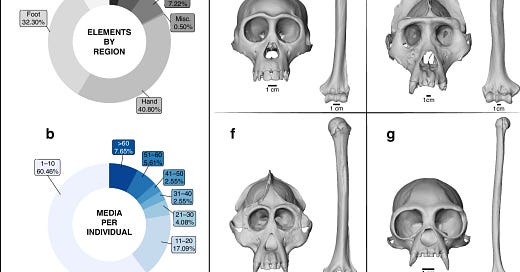A New Dimension in Primate Studies: Unveiling the Morphosource Dataset
How 3D models of primate skeletons are reshaping evolutionary science and global collaboration.
The Dawn of 3D Morphology
In the evolving landscape of evolutionary biology, where every bone tells a story, the Primate Phenotypes1 project offers an unprecedented leap forward. With over 6,000 3D scans from 386 individual specimens, this dataset marks the largest repository of its kind. Housed on the open-access platform MorphoSource, these scans provid…
Keep reading with a 7-day free trial
Subscribe to Primatology.net to keep reading this post and get 7 days of free access to the full post archives.



